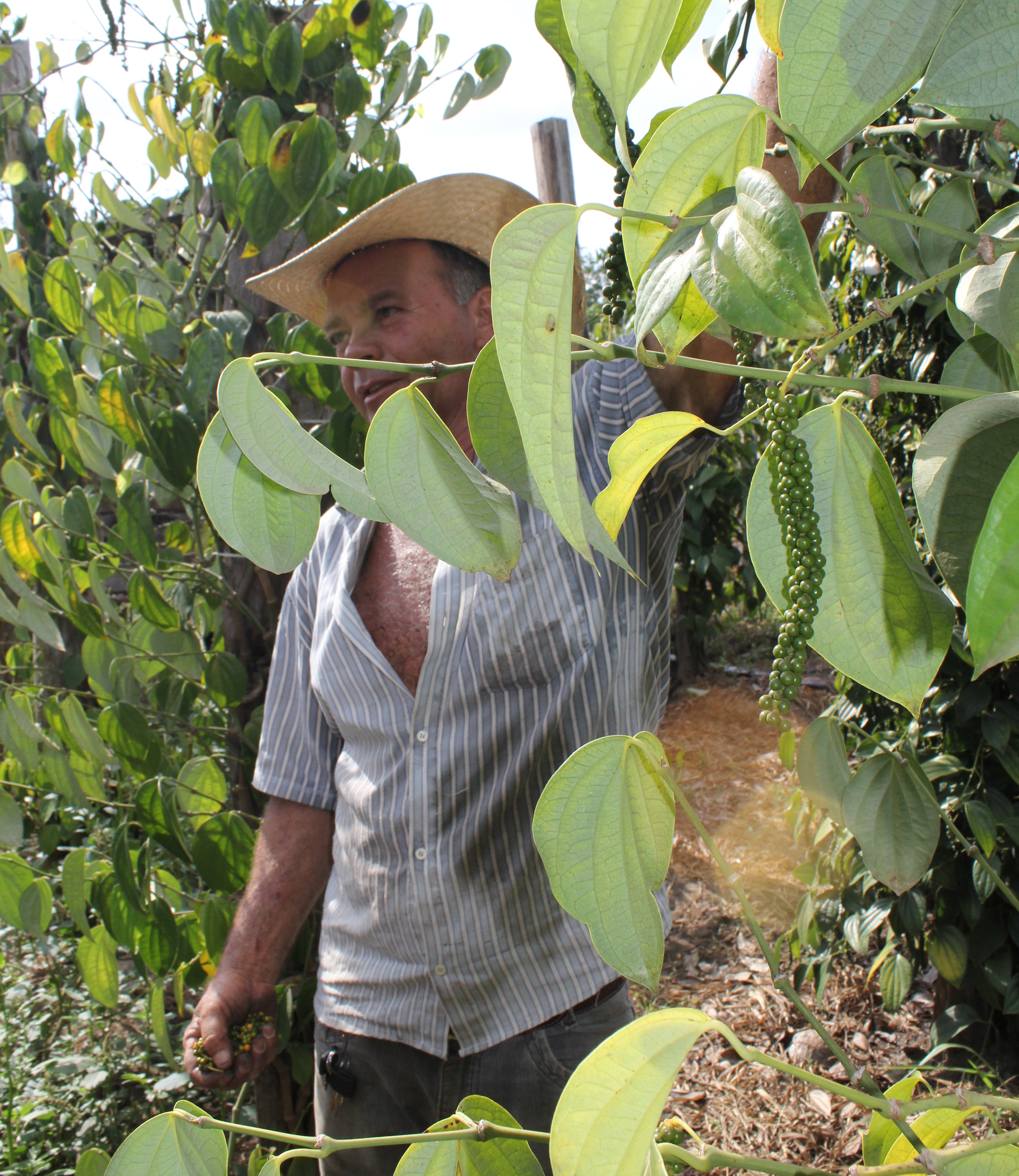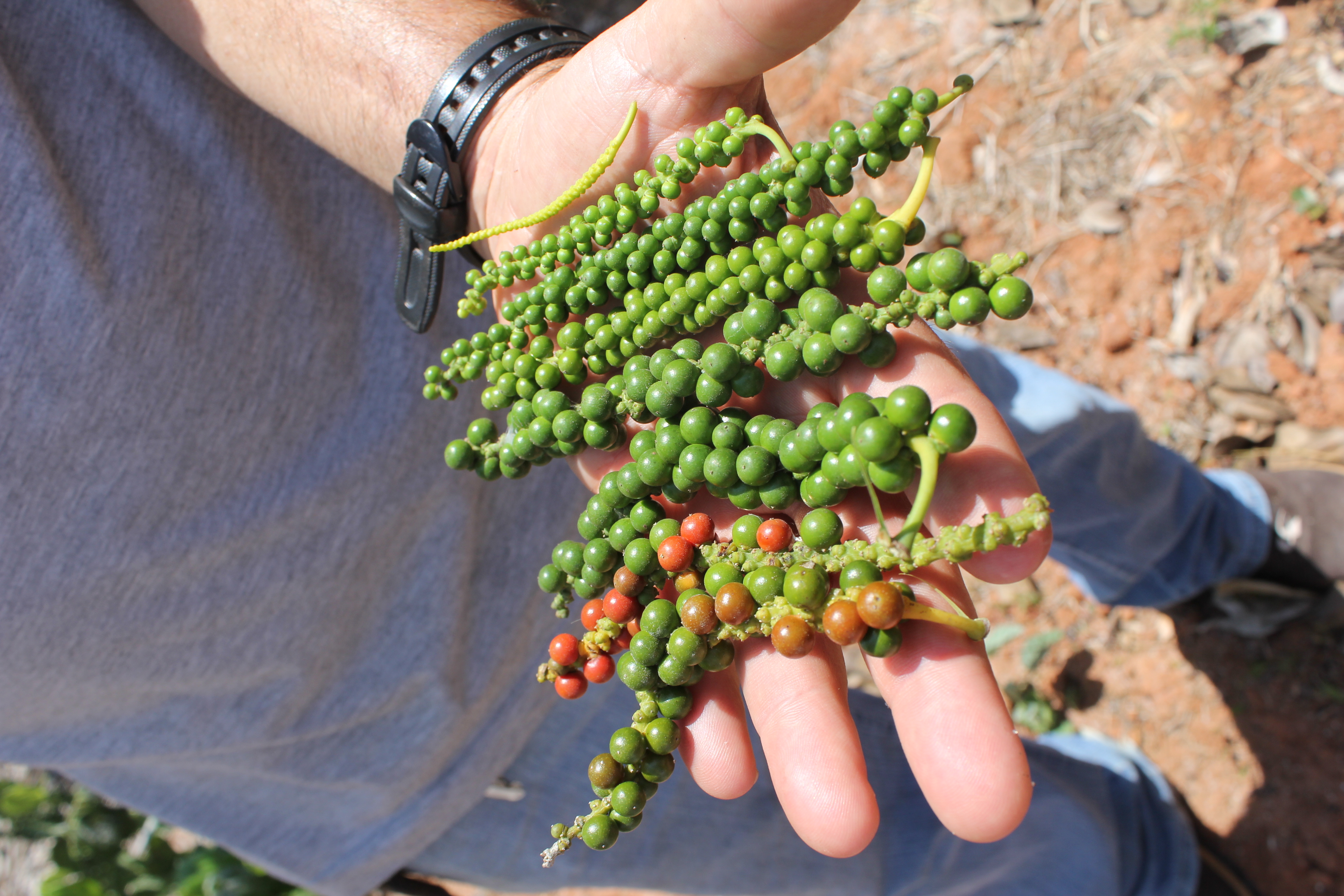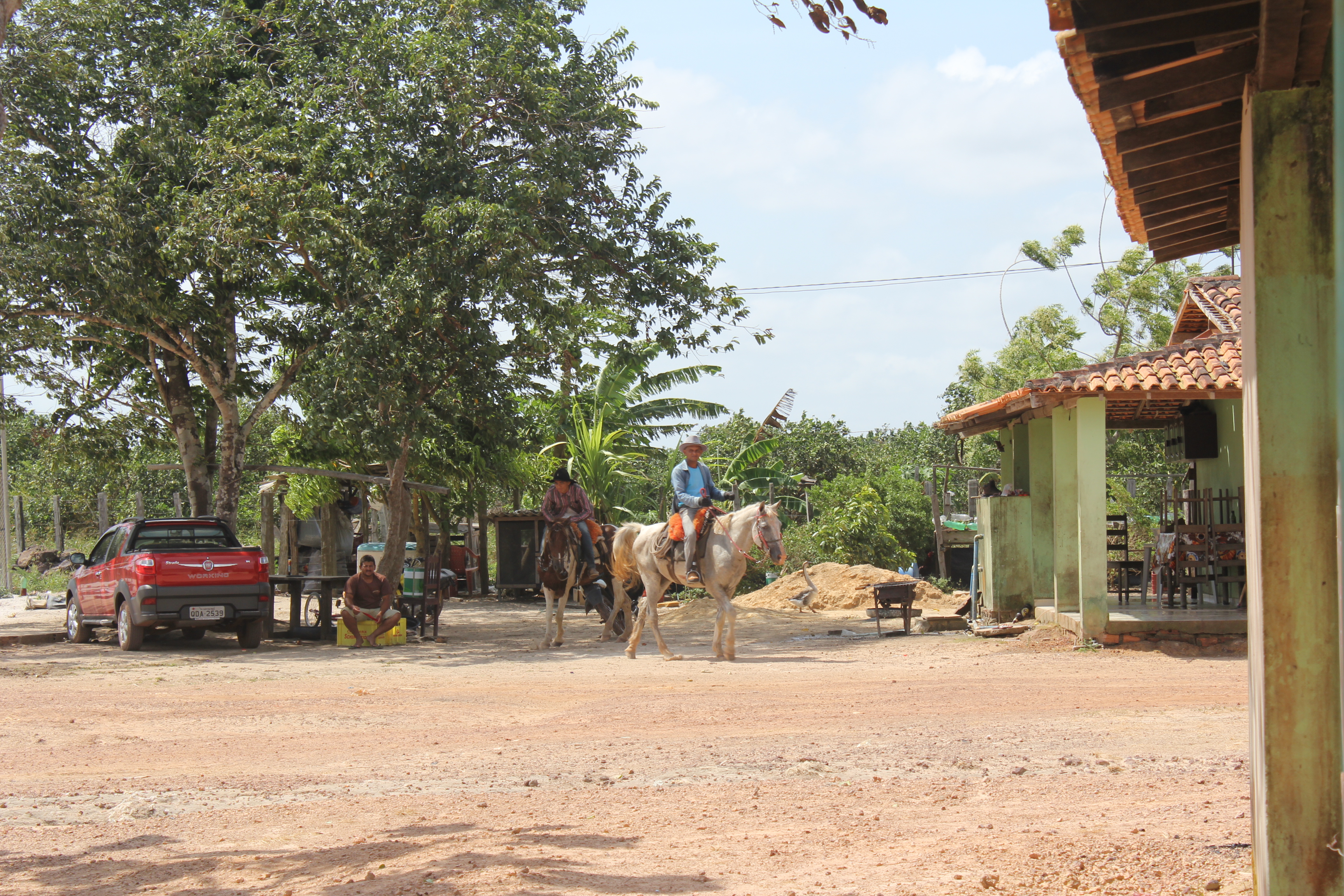“Obrigado” means “Thank you” in Portuguese and you hear this word, with the rolling “r” in the middle, everywhere in Brazil. If in a restaurant, something is brought to the table, the waiter says “Obrigado”, the guest answers “Obrigado” and when leaving the table, the waiter says– guess what – “Obrigado”. But thus are the Brazilians: friendly, fun-loving and altogether optimistic, despite of problematic economical situations. However, sometimes they are somewhat insecure concerning English communication, as this language is not wide-spread in Brazil. Pepper trade with Brazil is therefore not that easy, and the people, just below the 200‑million inhabitant’s mark, are dependent on help for being able to export the extensive natural resources of Brazil.
Nowadays, Brazilian pepper is highly demanded in Europe, as plant diseases and insect plagues in Vietnam lead to an increasing use of pesticides. For almost three years, AKO is buying pepper only from Brazil for protecting its customers against this kind of difficulty. As one of the few European Importers, AKO visits its suppliers in place.
Para in Amazonia
The crop is good in size; however, the heavier berries are so far less than last year. The pepper plants are full of panicles. But the heat is not good for the trees. The rainy season from January to June was scanty present and the daily cloudburst – predictable in a time between 3 p.m and 4.00 p.m. – had been missing in the second half of the year. At temperatures between 34 and 40° Celsius and a relative humidity of 80-95 % without rain, humans and nature suffer from the effects of El Nino.
At the time of our visit (end of September), the pepper crop in Para has already been harvested at 40 %; a few weeks too early because the pepper plants need to be released from the panicles before the fruits begin to emaciate the pepper plants and wither it.
On our field surveys on the pepper plantation, we recognized first heat damages of single plants. New plants suffer before ever having bore fruits for the first time.
The further processing occurs in Tomé Acu and Castanhal. Several processing clusters have formed here, whereas quality and size of the processing can substantially differ from each other.
In Para, 20 % of the crop is yielded by big farmers; the remaining quantities are from medium-sized and small plantations. We visited all three plantation sizes – whereas sizes in Brazil, a land as big as entire Europe, have another dimension than in Germany.
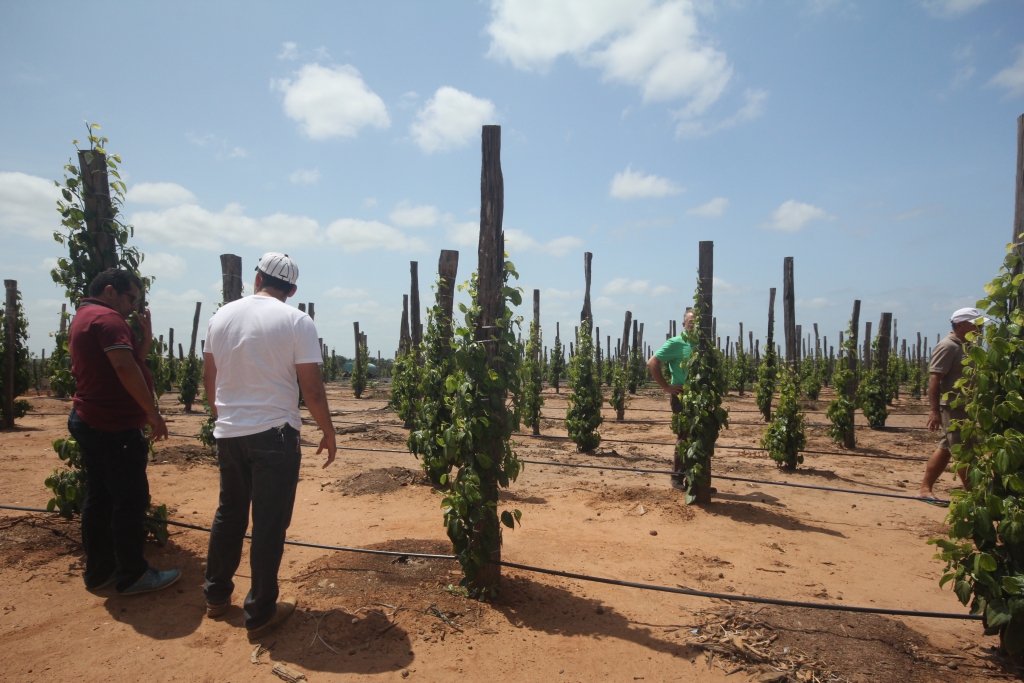
Our “big” pepper farmer is more or less a big family business of four brothers, all responsible in several topics. One of them works in the field of politics (!!), one at the National Board of Agriculture and the two other brothers took care on the farm. Altogether, they possess 10 lots of land (each with 25 hectares)
and obtain approximately 750 mt of black pepper per year. Their plantations are scattered in wide distances around the farm and new cultivations raise in hope for a further pepper boom.
The small and medium-sized farmers with plot sizes of up to 5 hectares sell the pepper to middlemen who are involved or processors with good connections.
The pepper is released from panicles and afterwards carefully sun-dried for three to four days, so it can be sold directly to the local processors.
The small and medium-sized farmers with plot sizes of up to 5 hectares sell the pepper to middlemen who are involved or processors with good connections.
Because of the high crime rate in Brazil, the transport to Exporters are often escorted by policemen in their free time (against payment of course!).
The further processing occurs in Tomé Acu and Castanhal. Several processing clusters have formed here. The exporters arrange a first recleaning of the goods, destoning and the fractionating in different pepper Qualities. Exporters in Para handle the pre-finance of the goods and organize the transport. Pre-finance and the heavily fluctuating real price which was devalued by around 53% in the last 12 months are problematic due to the price Level.
Espirito Santo (ES)
The second big cultivation area of pepper in Brazil is located further 3.200 km southeast and several flying hours away.
Espirito Santo is a traditional coffee-cultivation area. After the beginning of the pepper boom, many coffee specialists created a second mainstay with pepper. The manufacturers often have their own plantations.
With 15,000 mt per year, ES harvests currently scarcely half of Para, however, there are numerous big new cultivations. In 2016 at the latest, ES wants to be as big as Para.
The pepper gardens are new and very large. There are only few small farmers. Almost all fields are equipped with artificial watering systems, consequently, the dryness did not cause that enormous heat damages.
In contrast to Para, two to three pepper plants often stands at a Pole. This leads to a bigger harvest quantity per Pole but at the same time also to a stronger exhaustion of the ground.
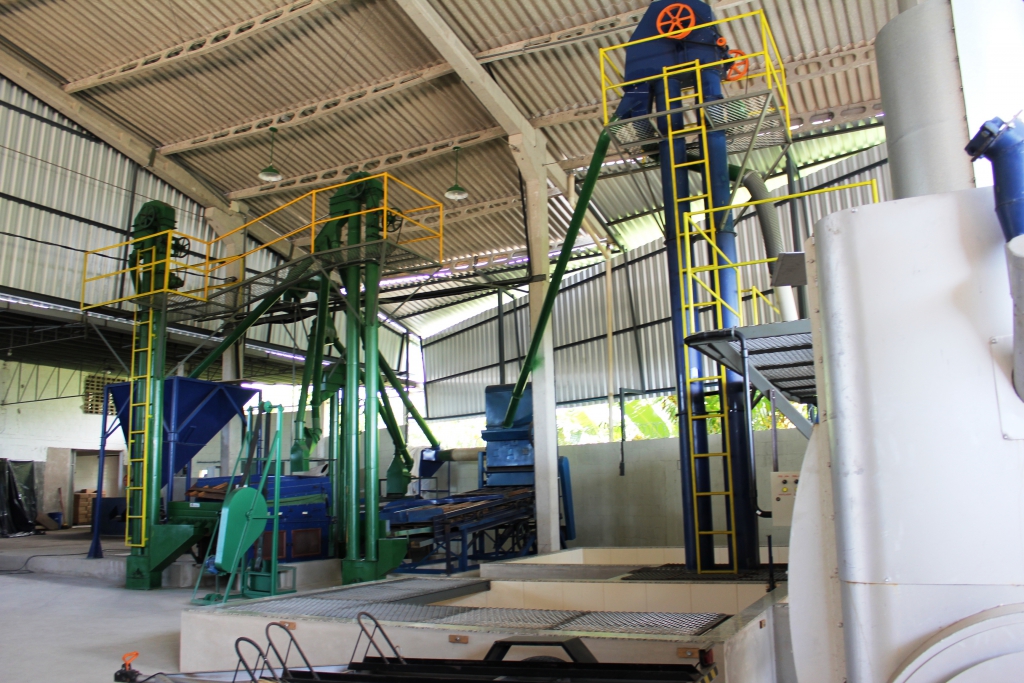
The harvest in ES starts in June, July and August (main harvest). In October there will be a harvest in-between as the peppercorns in a vine can vary in size (see hand with peppercorn).
Harvest losses are expected up to 20% if the dryness persist even longer. The processing is quite professional, partially with the very modern arrangements which are able to reclean and to redry.
How the pepper came to Brazil
History talks about a ship being on its way from Japan to Brazil and a pregnant passenger being in labor. For giving birth to the child with medical attendance, the ship stopped in Singapore. The remaining Japanese left the ship during this time and visited a little market in Singapore. So it was a Japanese guy who bought some seedlings of fresh pepper plants on this market, covered it into newsprint paper and took it aboard. After arrival in Brazil, the Japanese settled northward and planted the seedlings.
Consequential, the big Japanese pepper plants developed which became quite popular because of the especially good quality. It took only a short time until a Jewish trader found out that Brazil was able to produce more favorably than the people in Asia. Still today, this type of pepper, called Cingapura, is cultivated in Brazil besides four other different pepper types, and still today, Cingapura is the most resistant pepper plant by far.
Since 1997, Vietnam has been the world biggest pepper farmer due to governmental support programs, harvesting more than 140 000 mt per year. Brazil harvests about 30 000 mt in the North (Para and Maranhao), and 15 000 mt in South-East Brazil (Espirito Santo and Bahia) per year.
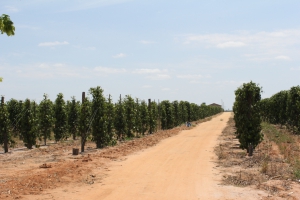
Pepper Plantation
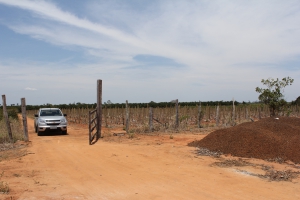
New Pepper Plantation
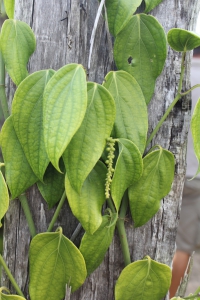 Pfeffer Plant Cingapura
Pfeffer Plant Cingapura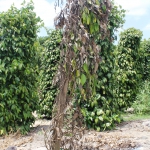
Drought damage
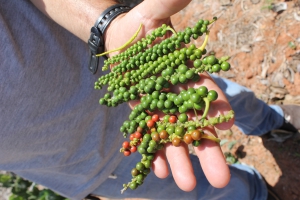 Different Sizes from one Vine
Different Sizes from one Vine 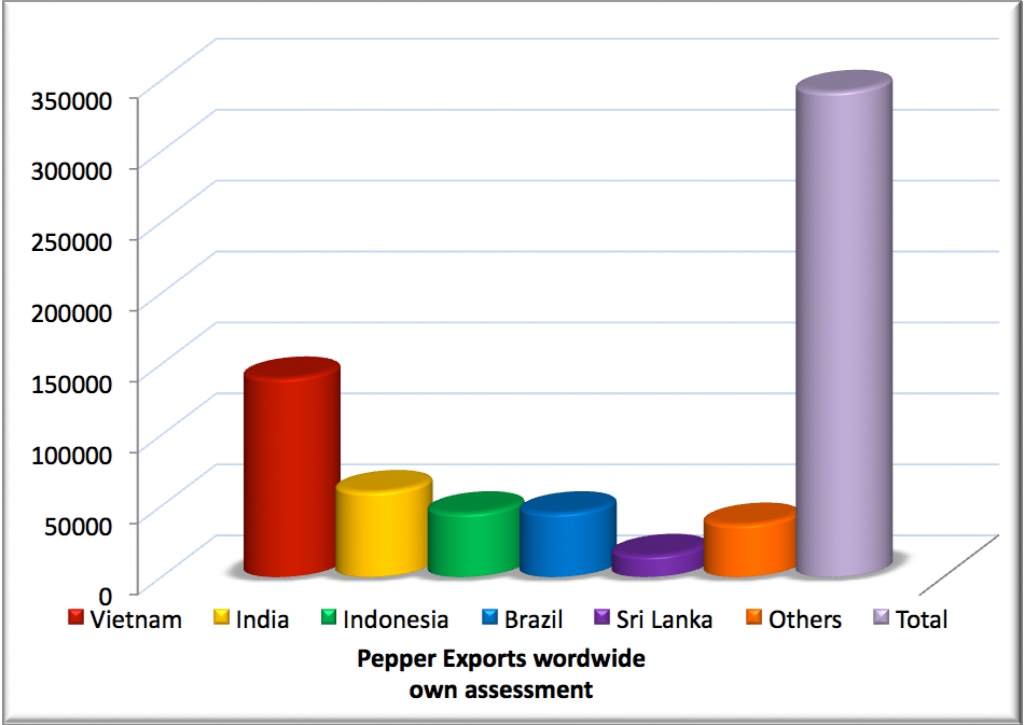
We are happy, that we are among the few German importers who had the chance for supplier audits with farmers and processors in Brazil. We learned a lot about pepper cultivation in Brazil.
Obrigado Brazil!

